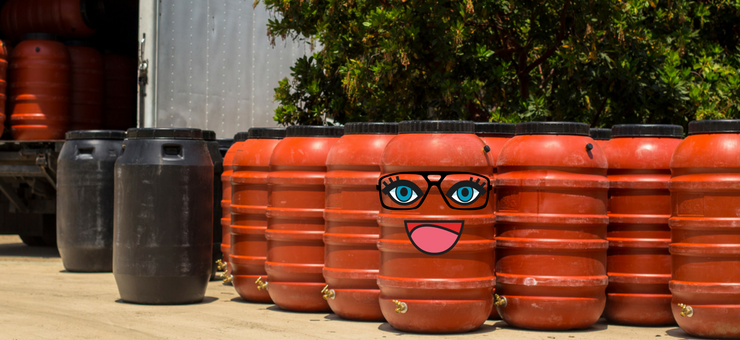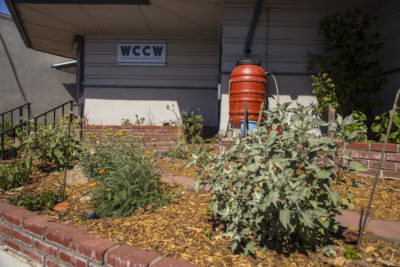As temperatures begin to drop and the rainy season (hopefully) approaches, it’s time to prepare our climate-ready gardens to capture some of that precious rainwater!
For those of you unfamiliar with this exciting trend, we interviewed our friend, Ms. Rain Barrel to get you in the know!
So I hear that you’re part of this new fad – harvesting rainwater. Do you think it’s going to last?
People have been collecting rainwater for thousands of years all around the world so this is no new trend! But in Los Angeles, rainwater harvesting is now starting to gain momentum, so now I am starting to “trend” as the kids say these days.
How much water can you capture?
For every square foot, an inch of rain will yield .6 gallons. So if you have a 1000 square foot roof, you can harvest 600 gallons every time it rains an inch. So, during an average year, you can save over 9000 gallons of water!
Yeah, but you’re just 55 gallons? Why would anyone bother using a rain barrel?
Water falls from the sky for free. Capturing it for later use just makes sense! If every Angeleno decided to install a barrel or two, or four, we could begin to reverse the water crisis within months.
But with our rainfall patterns, won’t you be empty half of the year?
In our semi-arid Mediterranean climate, there’s a very good chance I’ll be empty part of the year but once we get our first storm of the season, even if it’s a small one, you’ll be amazed at how much water I can collect! There is so much more that can be done when people realize how easy it is to capture rain or even redirect it into their gardens.
What can I do to prep my rain barrel for mosquitoes, earthquakes & small children?
Having a full tank of water requires some planning, so follow these steps and you’ll be ready in no time:
-
- Use a screened lid to prevent mosquitoes.
- Empty and clean your barrel as needed, especially a month before the rainy season starts.
- Use water heater earthquake straps to secure the barrel to the house.
- As for children, they love me! Give them some watering cans and they can have fun feeding the plants!
Do you have a cistern friend I can meet?
I have lots of friends, but a cistern is usually more complex and expensive than rain barrels like me. Many require permits and installation expertise and they need a first-flush diverter. You may want to start with a rain barrel or two before going big Don’t be shy, though– If you are interested in learning more about my friends, you can get more info here!
I’m afraid to ask, but what is a “first-flush”?
It’s the first ¾” of rain. Especially after an extended dry spell, months of collected dirt and pollutants go into our ocean. Yuck! So the aptly named first-flush diverter is necessary parts of a cistern system. Here’s more information if a cistern is what you are interested in.
I think I’ll stick with a barrel for now. Where can I install one?
A great place for a rain barrel is underneath a downspout and near a hose faucet. That way, you can easily connect the hose to your barrel when you need water. Once your barrel is empty, you can always switch back on the tap to imported water. Also, make sure I’m raised about 12” – 15” off the ground so gravity can help move water through the hose.
Is it a DIY or professional job?
Rain barrel installation is a basic DIY job! Go here for how to get a quality barrel and don’t forget to check for rebates you can cash in on.
Excited to get started? Watch this video to see what you need and how to install me!


